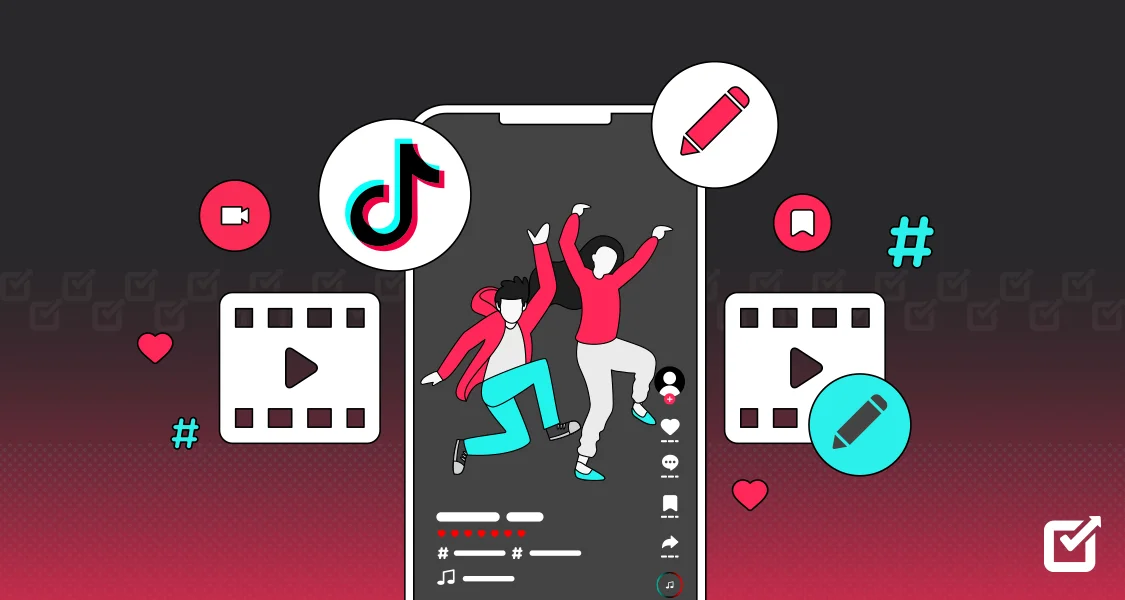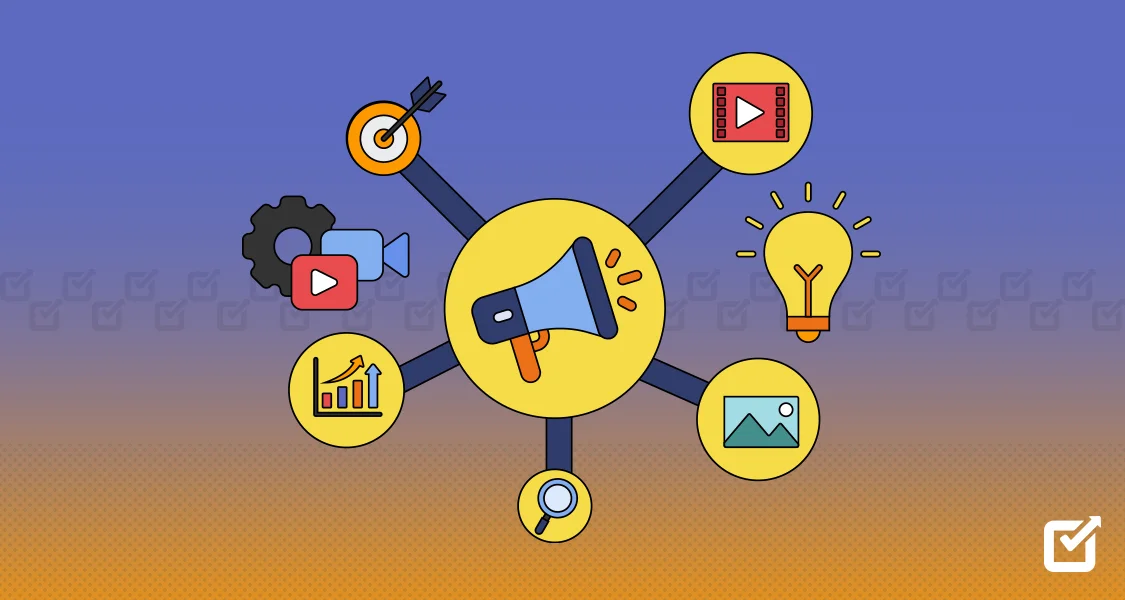Do you ever feel like you’re constantly creating content, but it’s not making a difference?
We’ve all been there!
In fact, research shows that 60% of marketers churn out content daily, which makes social media a content-saturated world.
This means simply hitting “publish” isn’t enough.
To survive and get recognized, you need a strategic approach.
This is where a content planner comes in!
This guide will show you how a content planner can help you create content that reaches your audience and drives results.
We’ll also share tips on how you can create a content planner, and along with tools (like a social media scheduler) that can help you get started!
Organize Your Content Calendar in Minutes!
Social Champ is your all-in-one tool to plan, schedule, and publish engaging social media content.
Short Summary
- Content planner is a tool to organize and manage content marketing strategy.
- These tools save time, improve efficiency, optimize content, increase engagement, ensure consistency, boost visibility, and allow performance tracking.
- You can create a content planner by outlining content categories, developing a content calendar, setting themes and topics, and reviewing and adjusting the plan.
- Some tools for content planning include Social Champ, Trello, CoSchedule, and Notion.
- The best practices for using a content planner include researching keywords, assembling tools, choosing your brand voice, organizing workflows, and being flexible.
What Is a Content Planner?
A content planner is an essential tool for organizing and managing a business’s content marketing strategy.
It serves as a centralized system where marketers can plan, schedule, and track content across various platforms.
With a content planner, you can ensure a cohesive and strategic approach to your marketing.
By mapping out content in advance, you can align your marketing efforts with specific goals, maintain consistency, and engage your target audience.
The primary function of a planner is to provide a clear roadmap of what content will be published and when.
This helps prevent last-minute scrambles and ensures that all content is purposeful and aligned with overarching marketing objectives.
It includes details such as topics, formats (blogs, videos, social media posts), and publication dates.
Essentially, it serves as a great way to allow marketers to visualize their content strategy.
Featured Article: How to Become a Growth Marketing Strategist in 2025
Benefits of Using a Content Planner
Using a content planner offers numerous advantages to streamline your marketing strategy.
Here are some amazing benefits of a content planner.
Save Time
Using a social media content planner significantly reduces the time spent on content creation and management.
By having a clear plan in place, you can schedule posts in advance and avoid the need for last-minute brainstorming sessions.
This allows for more efficient use of resources, so you can focus on other critical tasks and strategic initiatives.
This ultimately leads to better time management and productivity.
Efficiency
A planner streamlines the entire content creation process, making it more efficient.
It allows teams to plan, collaborate, and execute content strategies organizationally.
With defined timelines and clear responsibilities, the workflow becomes smoother, reducing bottlenecks and ensuring that deadlines are consistently met.
This efficiency leads to higher quality and more timely content.
Optimizing the Content
Content planners help optimize content type, format, and timing to maximize engagement.
It enables you to analyze past performance and plan accordingly.
This way, you can ensure that all your brand’s content is tailored to meet audience preferences and behavior.
This strategic approach enhances the relevance and impact of your content, making it more effective in achieving marketing goals.
Ensure Consistency
Consistency is key to building a strong brand presence.
A content planner ensures that your messaging remains consistent across all platforms.
By having a centralized plan, you can maintain a uniform voice, style, and schedule.
This helps reinforce brand identity and trust among your audience, which ultimately builds brand loyalty.
Increase Visibility
A well-planned content strategy increases your brand’s visibility across multiple channels.
By scheduling regular posts and aligning them with key marketing campaigns, you can ensure that your audience is continually exposed to your brand.
This frequent interaction helps keep your brand top-of-mind, increasing awareness and reach.
Create a Content Calendar
A content planner allows you to create a detailed content calendar outlining what needs to be posted and when.
This calendar acts as a roadmap, providing a clear vision of your content strategy over weeks or months.
It helps manage content flow, avoid overlaps, and ensure a balanced mix of content types.
This leads to a more structured and organized approach.
Collaborate With Influencers
Content planners are a great way to build partnerships with influencers.
With a proper plan in place, you can schedule influencer posts and ensure they align with your brand’s goals and timelines.
Content planners facilitate collaboration with influencers by allowing you to integrate their contributions into your overall strategy.
This organized approach helps you leverage influencer reach effectively, boost credibility, and expand your audience base.
Use Performance Tracking
A content planner often includes tools for performance tracking, enabling you to measure the success of your content.
Once you monitor key metrics like engagement, reach, and conversion rates, you’ll have insights into what works and what doesn’t.
This data-driven approach allows for continuous improvement and refinement of your content strategy.
Featured Article: Top Social Media Content Planning Trends for 2025: A 19-Step Action Plan
How to Create a Content Planner
Creating a content planner involves several key steps to ensure that your content strategy is organized, consistent, and effective. Here’s a guide to help you create a content planner:
Outline Content Categories
Organizing your content into categories helps maintain a balanced and comprehensive content strategy.
Categories may include educational content, product updates, customer stories, industry news, and user-generated content.
Each category should align with your goals and address different aspects of your audience’s interests and needs.
By diversifying your content types, you can keep your audience engaged and cater to various stages of the buyer’s journey.
Develop a Content Calendar
A content calendar is a visual representation of your content plan over a specific period.
It helps you organize and schedule content, ensuring a consistent posting schedule.
Choose a format that works best for your team, such as a spreadsheet, project management tool, or dedicated content planning software.
Populate the calendar with key dates, content titles, formats, and assigned team members.
A well-structured calendar helps you stay on track and ensures that your content strategy is implemented smoothly.
Set Content Themes and Topics
Content themes provide a cohesive direction for your content, making it easier to plan and create.
Define overarching themes for each month (or quarter) that align with your business goals and audience interests.
Within these themes, brainstorm specific topics that offer value to your audience and showcase your expertise.
Themes should be relevant, timely, and designed to engage your audience and drive them toward your desired action.
Review and Adjust
Regularly reviewing and adjusting your planner is essential for continuous improvement.
Analyze performance metrics such as engagement, traffic, and conversions to gauge the effectiveness of your content.
Gather feedback from your audience and team to identify areas for improvement.
Featured Article: 50 Exclusive Social Media Agencies You Must Know About
Tools and Templates for Content Planning
Planning content effectively requires the right tools to ensure organization, collaboration, and timely execution.
Here are some top content planning tools:
Social Champ

Social Champ Social Champ is a social media management tool that simplifies content planning and scheduling.
It allows users to schedule posts across multiple social media platforms from a single dashboard.
Features include a content calendar, bulk upload, automated posting, and performance analytics.
Social Champ’s user-friendly interface and robust capabilities make it ideal for effectively managing and planning social media content.
Boost Your Reach With Social Champ!
Plan, schedule, collaborate with your team, respond to comments, and track results – all from a single platform.
Trello

Trello Trello is a project management tool known for its intuitive and visual approach.
It uses boards, lists, and cards to organize tasks.
This makes it easy to manage content planning stages like ideation, creation, review, and publishing.
Each card can hold detailed descriptions, attachments, due dates, and comments, facilitating collaboration among team members.
Trello’s flexibility and visual organization make it popular for content planning.
CoSchedule

CoSchedule CoSchedule is a specialized marketing calendar tool designed to help you plan, execute, and publish content efficiently.
It integrates seamlessly with various platforms like WordPress and your social media channels.
CoSchedule also offers a visual calendar view, drag-and-drop functionality, task assignments, and analytics.
Notion

Notion Notion is an all-in-one workspace that combines note-taking, task management, and database functionalities.
For content planning, it offers customizable templates, calendars, and Kanban boards to organize content ideas, schedules, and progress.
Notion’s flexibility allows users to create a tailored content planning system that fits their specific needs.
Its collaborative features enable teams to work together seamlessly on content projects.
Templates for Content Planning
Effective content planning involves using structured templates to ensure consistency, organization, and efficiency.
Here are some essential templates for content planning, each serving a specific purpose in the content creation process:
Content Calendar Template
These content calendar templates by ClickUp help you organize and schedule your content over a specific period.
It typically includes columns for dates, content titles, content types, target audience, keywords, channels, and status.
This template ensures that you have a clear plan for your content.
This allows you to maintain a consistent posting schedule and track the progress of each content piece.

ClickUp Content Strategy Template
A content strategy template by Xtensio helps you define your overall content plan, including goals, audience, themes, and key performance indicators (KPIs).
This template guides you in outlining your content objectives, identifying your target audience, and planning content themes and topics that align with your business goals.

Xtensio Social Media Content Calendar Template
A social media content calendar template by Notion helps you plan and schedule your social media posts.
It includes columns for dates, post content, platforms, hashtags, visuals, and status.
This template ensures that your social media content is organized, timely, and aligned with your overall content strategy.

Notion’ social media calendar template
5 Best Practices for Using a Content Planner
Using a content planner ensures that your content creation process is organized, consistent, and aligned with your marketing goals.
Here are some best practices to help you maximize the benefits of a social media planner:
Research Keywords
Start by identifying the keywords relevant to your industry and audience.
Use tools like Google Keyword Planner, SEMrush, or Ahrefs to find popular and high-ranking keywords.
Incorporate these keywords into your content to enhance SEO and increase organic traffic.
Assemble Tools
Equip yourself with the right tools to maximize your content planning efficiency.
Tools like Trello, Asana, and CoSchedule can help manage your content calendar, track progress, and collaborate with your team.
Additionally, graphic design tools like Canva or Adobe Spark can streamline visual content creation.
Lastly, you can use scheduling tools like Social Champ to schedule, organize, and publish your content across all platforms.
Choose Your Brand Voice
Define a consistent brand voice that reflects your company’s personality and values.
Whether it’s formal, casual, or playful, your brand voice should resonate with your target audience.
Consistency in your tone helps build a recognizable and trustworthy brand identity across all your content.
Organize Workflows
Establish clear workflows to streamline your content creation process.
Assign team members specific tasks and deadlines, ensuring everyone knows their responsibilities.
Use your content planner to track the progress of each piece of content from ideation to publication.
This initiative can reduce bottlenecks and enhance productivity.
Be Flexible
While planning is crucial, it’s equally important to remain adaptable.
Monitor the performance of your content and be prepared to adjust your strategy based on analytics and feedback.
Stay updated with industry trends and be ready to pivot your content plans to stay relevant and engaging for your audience.
Conclusion
Using a content planner is an invaluable strategy for achieving marketing success.
By setting clear objectives, understanding your audience, organizing content by themes, and planning ahead, you can maintain consistency and relevance in your content.
Incorporating various content formats, using data and analytics, and fostering team collaboration further enhance your content strategy.


















